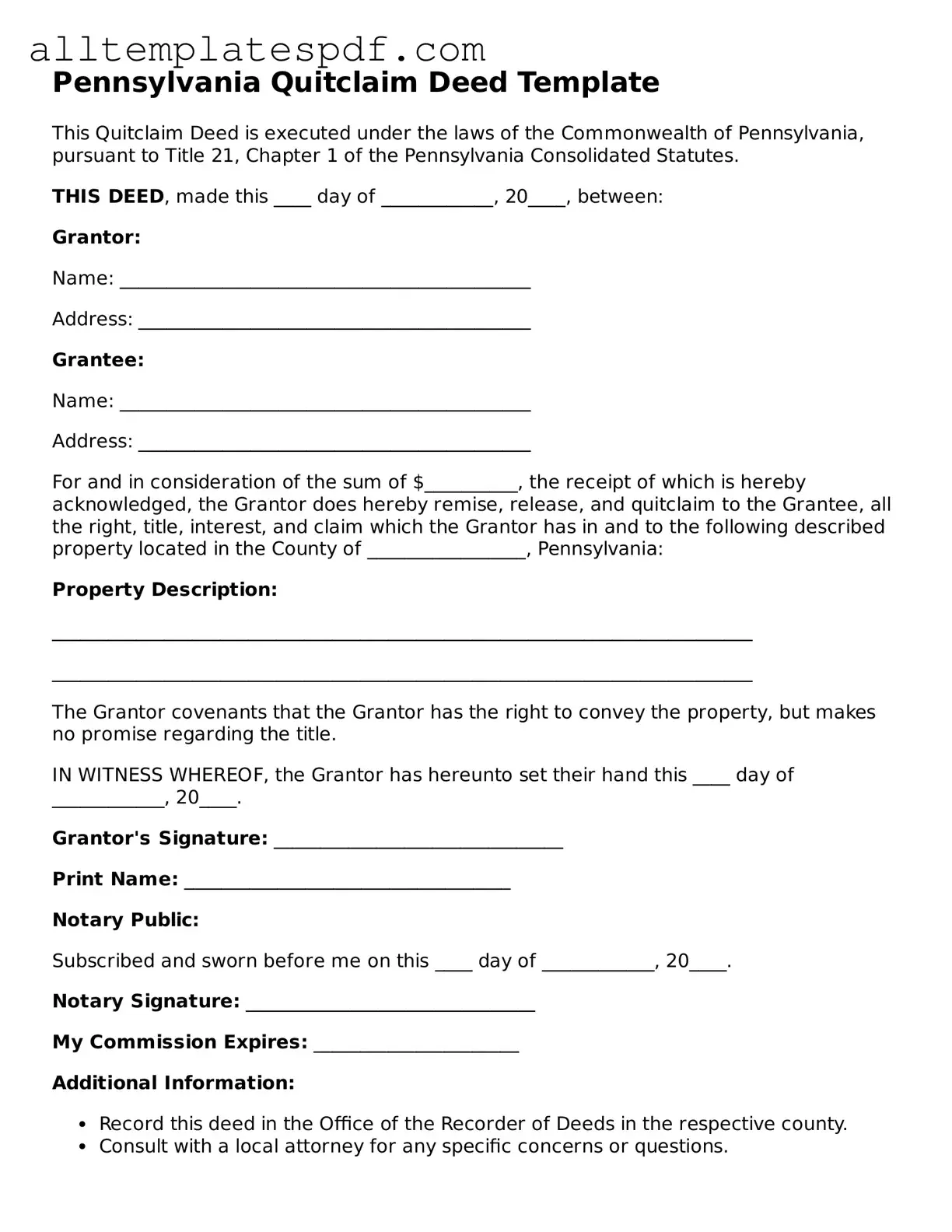Filling out a Pennsylvania Quitclaim Deed form can seem straightforward, but many people make common mistakes that can lead to complications down the road. Understanding these pitfalls can save time and prevent legal issues. Here are eight mistakes to watch out for.
One frequent error is not providing complete names. When filling out the form, it’s essential to include the full legal names of all parties involved. Abbreviations or nicknames can create confusion and may invalidate the deed. Always double-check that names match the official identification documents.
Another common mistake is failing to include a proper legal description of the property. The description should be detailed enough to identify the property clearly. Omitting this crucial information or using vague language can lead to disputes about the property’s boundaries. Make sure to refer to the property’s deed or tax records for accuracy.
Some individuals overlook the importance of notarization. A Quitclaim Deed must be signed in front of a notary public to be valid. Skipping this step can render the deed ineffective. Always ensure that signatures are notarized to avoid any issues during the transfer process.
It’s also common for people to forget to check for existing liens or encumbrances on the property. Before completing the deed, it’s wise to investigate whether any debts or claims exist against the property. Ignoring this step can lead to financial surprises later on, affecting the new owner’s rights.
Another mistake involves not filing the deed with the county. After completing the Quitclaim Deed, it must be recorded with the appropriate county office. Failing to do so means that the transfer may not be recognized legally, which could lead to complications in ownership. Always file the deed promptly to ensure proper documentation.
Some individuals also neglect to consider tax implications. Transferring property can have tax consequences, including potential transfer taxes. It’s advisable to consult with a tax professional to understand any liabilities that may arise from the transaction.
Additionally, not keeping copies of the completed deed is a mistake that can come back to haunt individuals. After filing, it’s important to retain copies for personal records. This documentation can be vital for future reference, especially if any disputes arise regarding the property.
Lastly, people sometimes rush the process without fully understanding the implications of a Quitclaim Deed. This type of deed transfers ownership without warranties, meaning the new owner may not have full rights. Taking the time to understand what a Quitclaim Deed entails can help prevent future misunderstandings and protect everyone involved.
